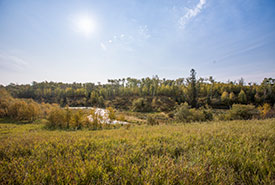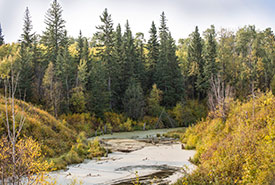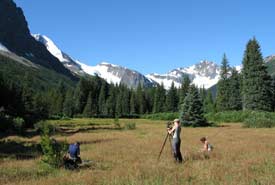Connecting protected spaces in Alberta's newest biosphere

NCC conservation property in Beaver Hills (Photo by Brent Calver)
When you live in a major urban centre, it’s easy to feel isolated from nature. But we are fortunate in Edmonton; we have an incredible wealth of natural areas just outside our door.
Just east of the city lies Beaver Hills, a natural landscape that spans five counties. It is home to Elk Island National Park, Miquelon Lake Provincial Park, the Cooking Lake-Blackfoot Provincial Recreation Area, Ukrainian Cultural Heritage Village and Strathcona Wilderness Centre. The Nature Conservancy of Canada (NCC) is currently working with partners, community members and our supporters to expand and connect the conserved landscape in the Beaver Hills.
Beaver Hills’ unique landscape is full of rolling, hummocky terrain. Its poor soil quality, by agricultural standards, has limited the types of agricultural clearing that have had big impacts on the land surrounding it. And as a result, this has kept its forests thriving. Visitors to this lush landscape are treated to stands of trembling aspen and spruce woodlands mixed in with grasslands and wetlands.
The area is home to many species of waterfowl, wetland songbirds and mammals, including moose, black bear and lynx. It is also an important source of surface and groundwater, which supplies some of the region’s largest wetlands and lakes.

Beaver Hills woodlands and riparian areas (Photo by Brent Calver)
This is one of the oldest protected areas in the country, beginning with its designation as a forest reserve in 1892. In 2016, UNESCO designated the Beaver Hills a biosphere reserve. At their core, biosphere reserves recognize the incredible effort that local communities have made to protect and conserve the landscapes and species that live within their boundaries. Our work within the biosphere will connect previously protected areas while providing sustainable stewardship practices to the communities that live there. Together, these ease the transition from human settlement to wild spaces.
NCC is committed to connecting the previously protected areas, and to working to preserve the natural features of the land, by investing $20 million over the next five years with the help of our partners and supporters. This collaboration is key to ensuring that the natural and cultural resources of the Beaver Hills continue to be a place where people can live, work and play.
Today, the citizens of Edmonton and those who care about this special place are invited to support the campaign. Together, we can continue down the path of conservation that began with the forest reserve designation over a century ago.
This blog was written collaboratively by Carys Richards, NCC Alberta's communications coordinator, and Andi Romito, NCC's senior development officer in Edmonton.



